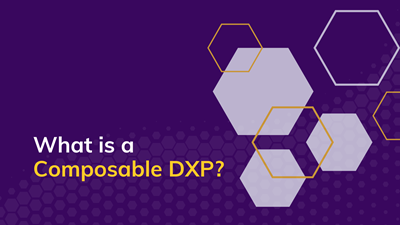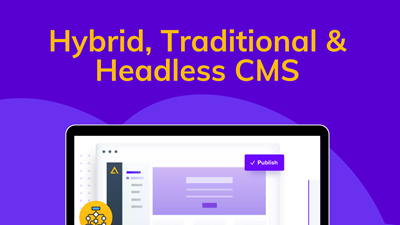The Future of E-Commerce: How Headless Commerce is Revolutionizing the Digital Marketplace


In digital commerce, staying ahead is a full throttle speed race. Technological advancement is a constant, and businesses either accelerate or fall behind. Enter the headless approach, a flexible strategy reshaping the online retail roadmap.
Headless commerce is a gear change in online store operations, decoupling front-end and back-end systems, to offer unparalleled flexibility and scalability. Businesses can now craft unique customer experiences across multiple touchpoints while maintaining centralized data control.
As we explore headless commerce, we'll see how this approach is not just a tech upgrade, but a strategic imperative; one that could redefine your business's trajectory.
Understanding Headless Commerce
Imagine a traditional e-commerce platform as a monolithic structure—a single, interconnected system where changes ripple throughout. Now, imagine headless commerce as a modular framework with each component operating independently yet harmoniously.
Headless commerce separates the customer-facing front-end from the functional back-end. This decoupling lets businesses update their interface or add new touchpoints without overhauling their entire infrastructure. It's like modern news production, where anchors report from anywhere to a central content hub.
Key features include:
- Decoupled Architecture: Front and back-end operate independently via APIs.
- Flexibility: Any front-end technology can be used to create customized experiences.
- Scalability: Independent scaling of front and back-end.
- Agility: Rapid deployment of new features and updates.
The Roadblocks of Traditional E-Commerce
Traditional e-commerce platforms are struggling to keep pace in the fast lane of modern commerce. Let's look under the hood to understand why:
- Rigid Architecture: Changes to one part affect the whole system, slowing innovation.
- Channel Limitations: Pre-built templates restrict unique brand experiences.
- Scalability Issues: High-traffic pressure often overwhelms these systems.
- Technology Integration Hurdles: Adding new technologies is cumbersome.
- Data Silos: Siloed information hinders a unified view of the customer journey.
As digital retail evolves, businesses clinging to legacy systems risk obsolescence. The market demands agility and responsiveness that traditional platforms struggle to provide.
The Future of E-Commerce: Emerging Trends and Solutions
As we peer into the future of e-commerce, several trends emerge:
- Omnichannel Experiences: Seamless interactions across multiple touchpoints are now expected.
- Hyper-Personalization: Tailored experiences are replacing one-size-fits-all approaches.
- Emerging Technologies: AR/VR, chatbots, and blockchain are becoming mainstream.
- Sustainability and Ethics: Consumers are prioritizing brands with strong ethical and environmental practices.
- Real-Time Operations: Instant inventory updates and flexible fulfillment are the new standard.
These trends present significant challenges for traditional e-commerce platforms, but headless commerce is uniquely positioned to address them.
Headless Commerce: Powering Future-Ready E-commerce
Omnichannel Capabilities
- Manage content across multiple channels from a single source.
- Adapt quickly to new platforms without overhauling the backend.
- Maintain consistent brand experiences across all touchpoints.
Advanced Personalization
- Integrate seamlessly with AI and customer data platforms.
- Adjust content and offers in real-time based on user behavior.
- Facilitate rapid A/B testing and experience optimization.
Scalability and Performance
- Scale front-end and back-end independently for optimal resource use.
- Leverage CDNs for faster content delivery.
- Maintain performance during high-traffic events like Black Friday.
Agility and Innovation
- Enable parallel development of front-end and back-end.
- Implement new features without risking core functionalities.
- Easily integrate cutting-edge technologies and third-party services.
Future-Proof Architecture
- Update individual components without system-wide changes.
- Adopt new technologies or channels as they emerge.
- Modernize legacy systems gradually, reducing risk and cost.
Case Studies and Industry Examples
To illustrate the transformative power of headless commerce, let's examine how leading brands are leveraging this approach:
Nike
Solution: Created its own headless commerce platform powered by cloud-native and microservices technology.
Result: Unified omnichannel experience across website, mobile app, and in-store touchpoints. Customers can start a purchase on one device and complete it on another, or reserve products online for in-store pickup.
Benefit: 33% increase in conversion rates and a 51% increase in online revenue.
Walmart
Solution: Implemented headless approach with microservices architecture and open technologies.
Result: High growth in online sales and improved customer experience.
Benefit: Walmart's most recent Black Friday event saw a 386% surge in online searches surpassing Amazon in searches for Black Friday discounts.
Glossier
Solution: Adopted headless commerce to enhance personalization and content delivery.
Result: Seamless integration of content and commerce across all channels.
Benefit: Since adoption Glossier has benefited from higher customer engagement, increased satisfaction, and ultimately, higher conversions.
The Role of AI and Machine Learning in Headless Commerce
As headless commerce continues to evolve, the integration of AI and machine learning is further enhancing its capabilities. These technologies are transforming e-commerce operations and providing advanced capabilities for personalization, data analytics, dynamic pricing, and more.
Here's how AI and ML are enhancing headless commerce:
- Personalization: AI-driven product recommendations (e.g., Amazon's recommendation engine) analyze customer data to deliver higher engagement and conversion rates.
- Improved Site Search: AI-powered visual search allows customers to search for products using images. (e.g., Pinterest Lens).
- Dynamic Pricing: AI algorithms can adjust prices in real-time based on factors like demand, competition, and inventory levels
- Inventory Management: AI and ML analyze historical sales data and market trends to predict future demand, helping businesses optimize inventory levels and reduce stock outs or overstock situations (e.g., Walmart's AI-powered inventory management).
- Churn Prediction: Machine learning models can identify patterns that indicate a customer is likely to churn, allowing businesses to take proactive measures to retain these customers (e.g., Netflix's personalized content suggestions).
- Fraud Detection: AI and ML can detect fraudulent activities by analyzing transaction patterns and identifying anomalies (e.g., PayPal's fraud prevention system).
- Customer Service Automation: AI-powered chatbots can handle basic customer inquiries, provide product information, and assist with order tracking, ensuring 24/7 (e.g., Sephora's Virtual Artist).
Navigating the Challenges of Headless Commerce
While headless commerce offers significant advantages, businesses should be aware of potential challenges:
- Complexity: Setting up a headless system can be more complex than traditional platforms. It requires careful planning and execution.
- Resource Considerations: Headless commerce often demands specialized skills. This may necessitate investment in new talent or training for existing staff.
- Content Consistency: Managing content across multiple channels and ensuring a consistent brand voice and message requires robust strategies.
- Performance Monitoring: With decoupled systems, comprehensive monitoring becomes crucial. Businesses need to keep a close eye on all components.
- Data Security: As data flows between more systems, robust security measures are essential. Protecting customer information and transactions becomes more complex.
Key Point: While headless commerce offers powerful benefits, it comes with its own set of challenges. Businesses must navigate implementation, resource allocation, content management, performance monitoring, and enhanced security needs.
Conclusion
As we navigate the ever-changing waters of e-commerce, the need for adaptability has never been more apparent. Headless commerce emerges not just as a technological solution, but as a strategic imperative for businesses looking to thrive in the digital age.
By decoupling the front-end from the back-end, headless commerce offers unparalleled flexibility, allowing businesses to craft bespoke customer experiences across an array of touchpoints while maintaining a robust, centralized system for managing transactions and data. This approach addresses the key challenges facing modern e-commerce:
- It enables true omnichannel capabilities, ensuring consistent brand experiences across all platforms.
- It facilitates deep personalization, allowing businesses to tailor experiences to individual customer preferences.
- It provides the scalability and performance necessary to handle growth and traffic spikes.
- It fosters agility and innovation, enabling rapid experimentation and optimization.
- Perhaps most importantly, it future-proofs businesses against technological changes and evolving consumer behaviors.
As we've seen, the benefits of headless commerce are not theoretical—they're already being realized by leading brands across various sectors. The integration of AI and machine learning is further enhancing these capabilities, offering even more sophisticated tools for personalization, optimization, and customer engagement.
The e-commerce landscape will continue to be driven by both technological transformations and shifting consumer expectations. In this context, the question for businesses is not whether to adopt headless commerce, but how quickly they can make the transition.
For those looking to stay competitive and future-ready, embracing headless architecture is not just an option—it's a necessity. The future of e-commerce is headless, and the time to adapt is now.

About the Author
Adam is an experienced marketing leader with a natural curiosity about human behaviour. He heads up Agility's marketing efforts, helping others discover and experience the easy to use CMS with insane support. A big believer of living in the moment, Adam doesn't want to see you wasting the precious time you have on this earth on clunky, outdated content management systems. He's been there. It wasn't pretty. Give Agility CMS a try and start enjoying your life while you rock your job and have less headaches. Learn more about Adam HERE




